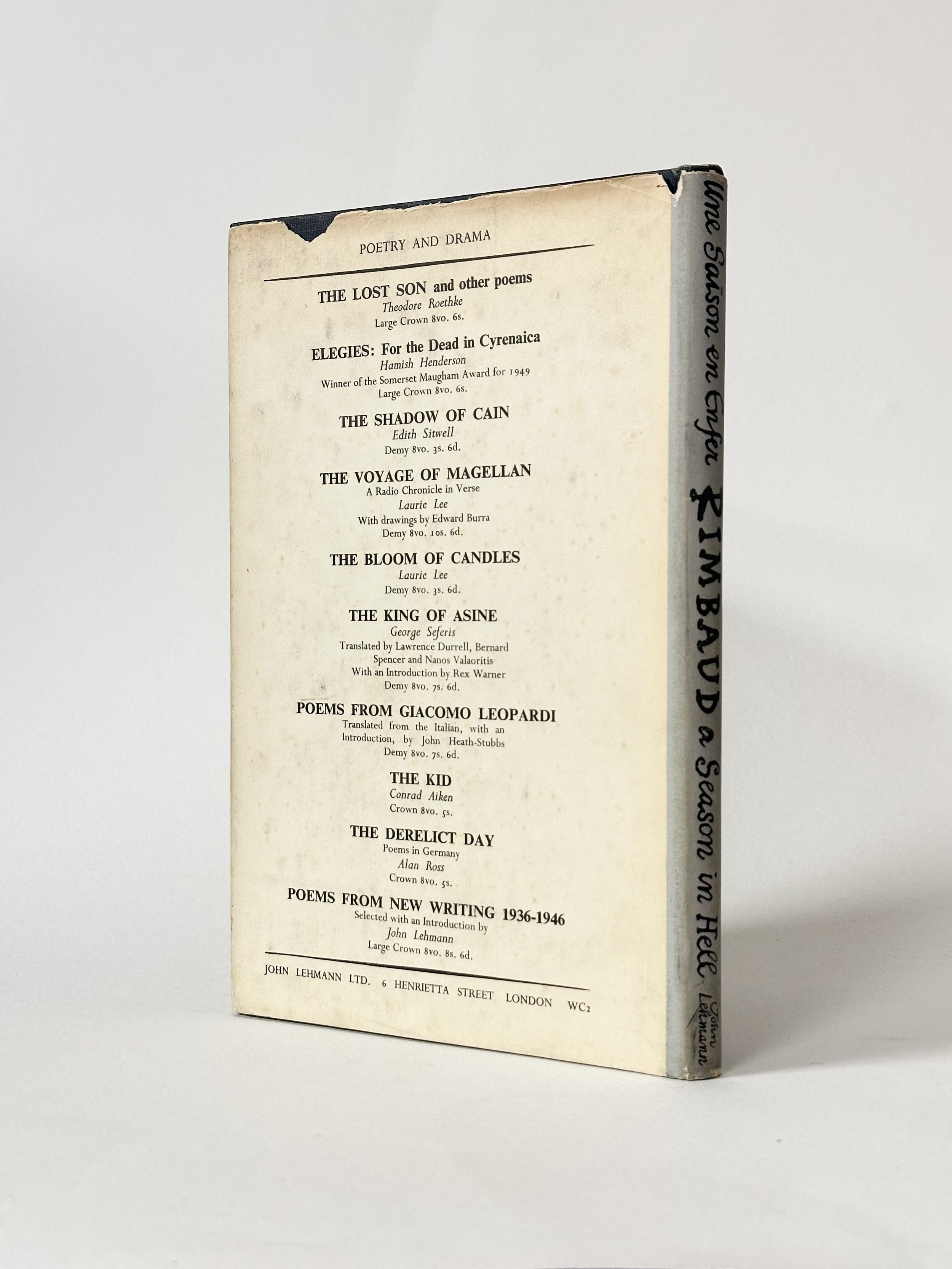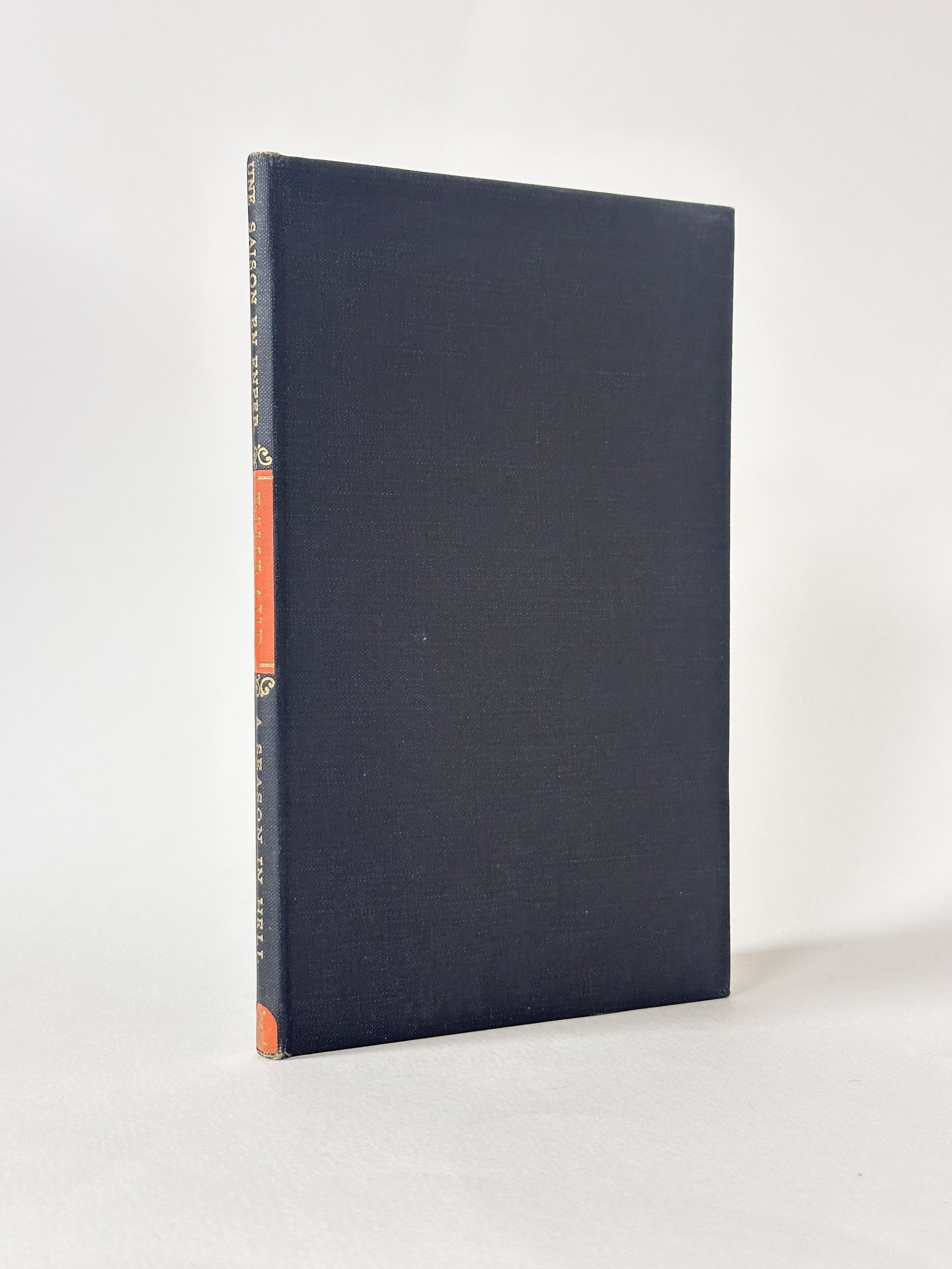 Image 1 of 4
Image 1 of 4

 Image 2 of 4
Image 2 of 4

 Image 3 of 4
Image 3 of 4

 Image 4 of 4
Image 4 of 4





RIMBAUD, Arthur. A Season in Hell
RIMBAUD, Arthur. A Season in Hell. Trans. by Norman Cameron. With drawings by Keith Vaughan and the original text in French. London: John Lehmann. 1949. 8vo. First edition thus. Publisher’s black cloth lettered in red and gilt to the spine, in the wonderful Keith Vaughan dust jacket. A near fine copy, the cloth clean, a trifle bumped to the spine tips, the narrow backstrip a trifle rolled, but the binding tight and square. The contents fine throughout. The dust jacket unclipped (15s net) with one small chip to rear panel top edge, corners and tips just a trifle rubbed with a couple of tiny nicks, but a sharp and very presentable copy.
Originally published as ‘Une Saison en Enfer’ in 1873, and written before and after the Brussels scandal, in which eighteen-year-old Rimbaud’s equally troubled lover, Paul Verlaine, shot him in the wrist with a revolver. It marked the end of Rimbaud as poet, and the Parisian literati supposedly castigated him for his relationship with Verlaine. The book itself extraordinarily deals with living, dying, and the choice between the two, written in the modernist—or rather pre-modernist—style. Keith Vaughan’s remarkable lithographs perfectly encapsulate the sort of manic entrapment Rimbaud suffered. Scarce.
RIMBAUD, Arthur. A Season in Hell. Trans. by Norman Cameron. With drawings by Keith Vaughan and the original text in French. London: John Lehmann. 1949. 8vo. First edition thus. Publisher’s black cloth lettered in red and gilt to the spine, in the wonderful Keith Vaughan dust jacket. A near fine copy, the cloth clean, a trifle bumped to the spine tips, the narrow backstrip a trifle rolled, but the binding tight and square. The contents fine throughout. The dust jacket unclipped (15s net) with one small chip to rear panel top edge, corners and tips just a trifle rubbed with a couple of tiny nicks, but a sharp and very presentable copy.
Originally published as ‘Une Saison en Enfer’ in 1873, and written before and after the Brussels scandal, in which eighteen-year-old Rimbaud’s equally troubled lover, Paul Verlaine, shot him in the wrist with a revolver. It marked the end of Rimbaud as poet, and the Parisian literati supposedly castigated him for his relationship with Verlaine. The book itself extraordinarily deals with living, dying, and the choice between the two, written in the modernist—or rather pre-modernist—style. Keith Vaughan’s remarkable lithographs perfectly encapsulate the sort of manic entrapment Rimbaud suffered. Scarce.
